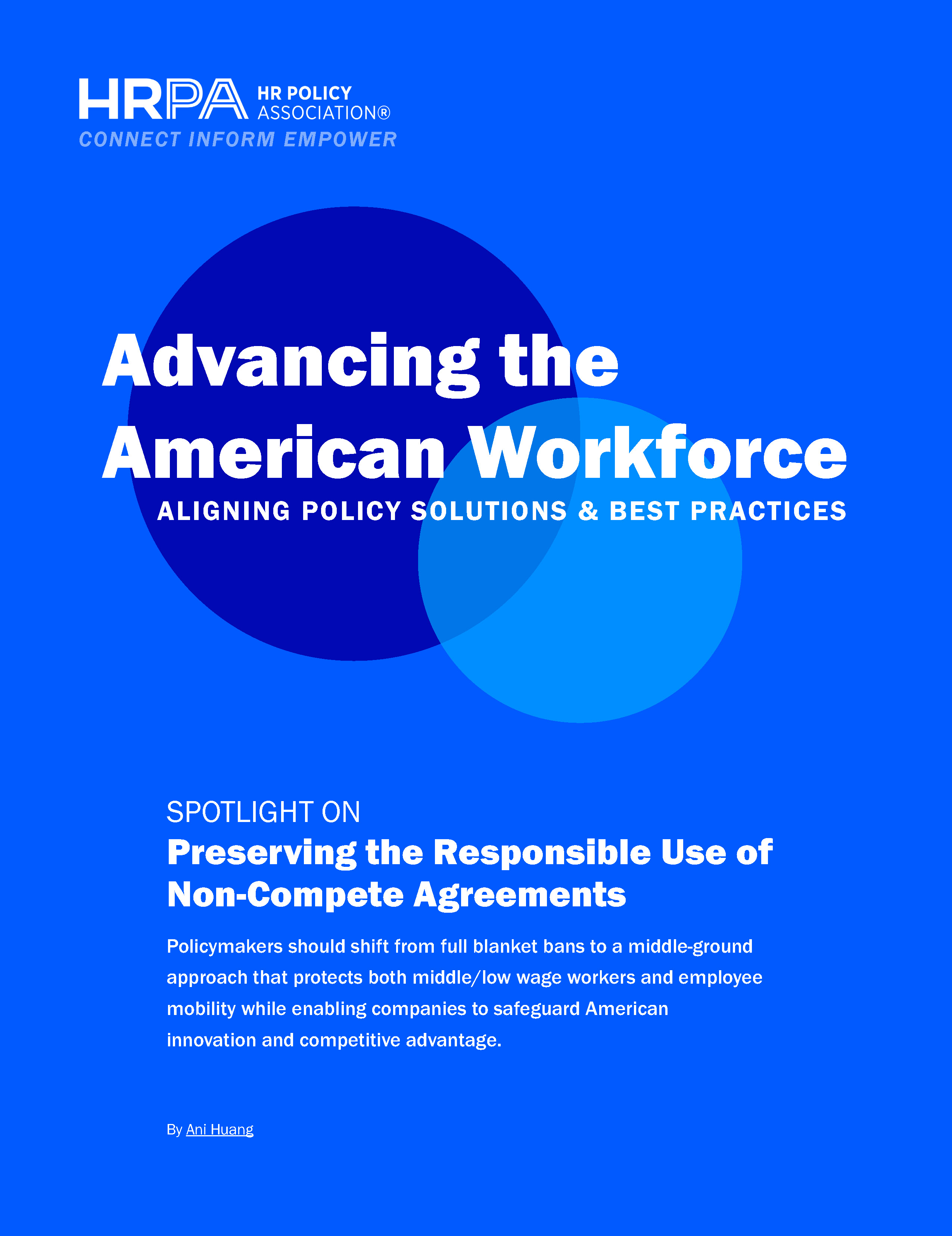Published on: February 20, 2025
Authors: Nancy B. Hammer
Topics: Employee Relations, Employment Law, Jobs, Skills and Training
Non-compete agreements help companies protect vital investments in their employees and ensure the security of research and development, trade secrets, and institutional knowledge.
- Large employers typically use non-compete agreements for executive-level employees and or those with access to sensitive information.
- Most agreements last no more than one year after an employee’s departure, and as little as six months for non-executive officers.
- Agreements with executive-level employees are most often considered along with other benefits through negotiation.
A Path Forward: Rather than completely banning the use of non-compete agreements, policymakers should consider a middle-ground approach that protects both middle/ low wage workers and employee mobility while enabling companies to safeguard their intellectual property and competitive advantage.
Why Non-Competes Matter
Protection of Trade Secrets and Proprietary Information: Non-compete agreements serve as a critical tool for protecting trade secrets and proprietary information. Without them, companies face heightened risks of employees leaving to work for competitors and taking sensitive information, leading to unauthorized use or disclosure of valuable intellectual property.
Innovation and Research & Development: Companies heavily invested in research and development, particularly in industries with long product development cycles, such as medical device development, rely on non-compete agreements to retain talent and protect their innovation.
Competitive Disadvantage: Companies may face a competitive disadvantage without the ability to limit employees’ immediate entry into competing firms. This unrestricted mobility could allow competitors to poach key talent, benefiting from the knowledge and expertise gained from a former employer, thus eroding a company’s market share or competitive edge.
Impact on Training and Investment: Companies invest significantly in training and development of employees. Without non-compete protection, there’s a risk of employees leaving shortly after substantial investments in their skills and knowledge, leading to losses for the company.
Regional Competitiveness: In jurisdictions where non-competes are banned, local companies might struggle to compete against counterparts from regions with more favorable IP protection laws. This could result in talent drain and economic challenges for companies with facilities in these regions.
Framework and Policy Recommendations for Non-Compete Reform
- Reform non-compete agreements to apply to specific populations
Non-compete agreements would be presumed lawful for protection of specific business interests for all employees making more than the average wage in the state in which the agreement is operative. - Eliminate non-compete agreements for lower-wage employees
Non-compete agreements would be prohibited for employees making below the average wage in the state in which the agreement is operative. - Define lawful protectable business interests
Lawful protectable business interests would include trade secrets (broadly defined), ongoing client and customer relationships, as well as certain specific business sales or business creations. - Narrowly tailor the geographical area and scope of the competition
For agreements to be lawful, they must be narrowly tailored in a geographical area and type of work or services impacted to protect a lawful protectable business interest. - Limit the time that agreements are in effect after work relationships end
For trade secrets and client and customer relationships, non-compete agreements cannot be in effect for more than one year after the work relationship ends. - Extend the effective period for specific cases
For business creation and business sales, the period would be extended to five years.
 | Learn More Preserving the Responsible Use of Non-Compete Agreements Gain further insights in our report: Preserving the Responsible Use of Non-Compete Agreements, a key part of our Advancing the American Workforce series. |
